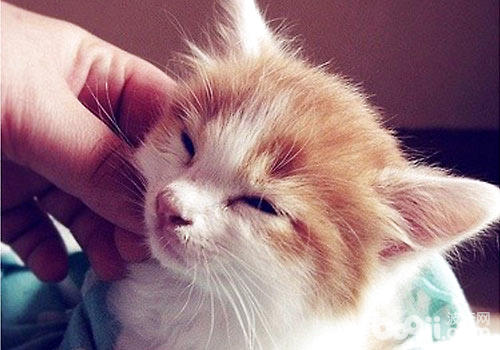
Why do cats become obedient when they grab the back of the cat's neck?
If you are the parent of a cat, have you ever experienced such an experience in your life, the cat is naughty, you try hard to catch him and teach him a lesson, but you can't do anything, and finally you and the cat are exhausted and fall to the side,
Cats won't move when they are caught by the back of their necks, however, are all cats like this? Let's look at the fold cat first.
The owner of the fold-eared cat is Mr. Yin. This fold-eared cat has been raised at home for a year and a half.
As a result, after Mr. Yin caught the kitten, the folded-eared cat really seemed to be acupointed, with its limbs open and motionless.
Through the personal experience of the first kitten, we found that the method of grasping the skin on the back of the kitten's neck is really useful, but the maintenance time is a bit short.
Let's take another look at a Norwegian forest cat.
As a result, the 12-year-old cat had the same situation. After being picked up by the flesh on the back of the neck, it also stretched its limbs and could not move.
Next came the third experimental kitten.
In fact, different cats have individual differences. Generally speaking, when most cats are caught by the flesh on the back of their necks, they will indeed appear relatively quiet or even completely motionless.
Because when the big cat is raising the kitten, it is directly held by the neck. It thinks that the mother is holding it. If it is disturbed, it will fall and fall, so it will not move.
That is to say, it is actually a genetic reaction that the cat becomes quiet after being grabbed by the flesh on the back of the neck, but because the feeling of the human hand is different from the feeling of the mother cat picking up the child, the cat will return to the original state within a certain period of time.
A group of Japanese neurobiologists studied a series of physiological responses when "animals are picked up by their mothers" and found that a similar "sedative effect" exists not only in mice, but also in human infants.
The research is significant because the "consistency of physiological responses across species" allows scientists to study the reasons behind the phenomenon using mice (rather than human infants), and the findings not only explain the "one-clamp freeze" that this paper attempts to answer
In the experiment, they anesthetized the nerves in the necks of the young mice to feel the movement, after which the "sedative effect" produced by "being picked up" weakened.
Therefore, it is not that the flesh behind the cat's neck is dead, on the contrary, it is the sensory nerves at the back of the neck that make the cat get the signal of "I was picked up"; and the subsequent physiological response similar to being acupuncture is not because of "nerves".
